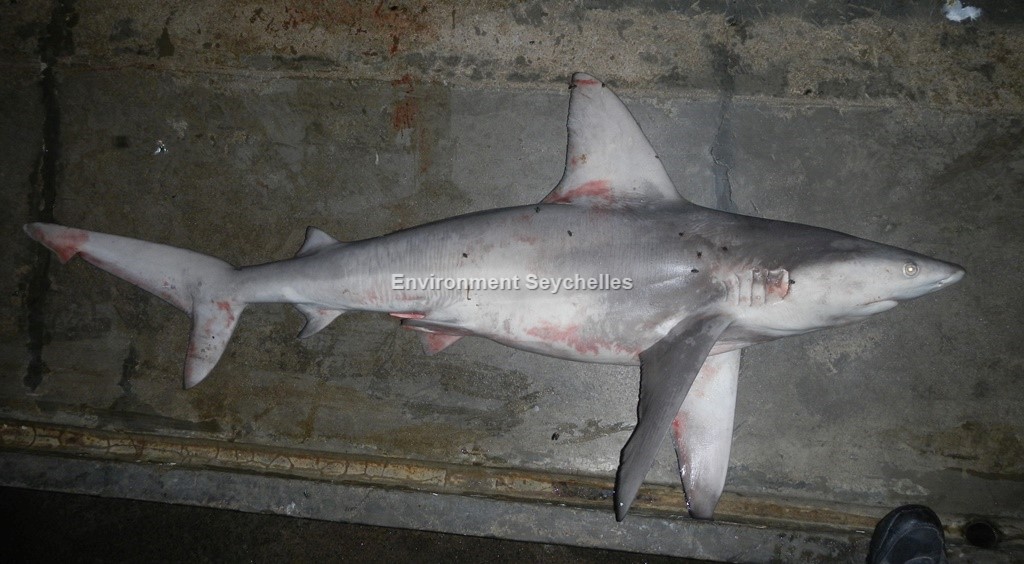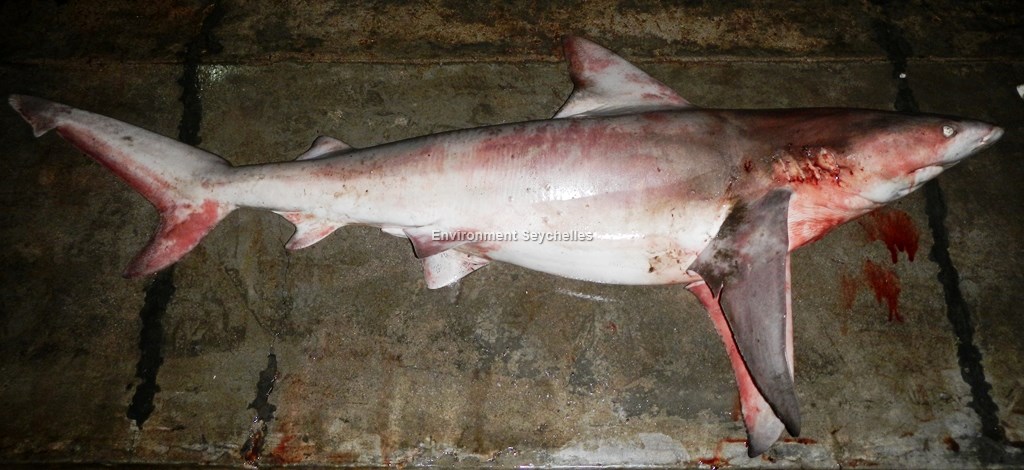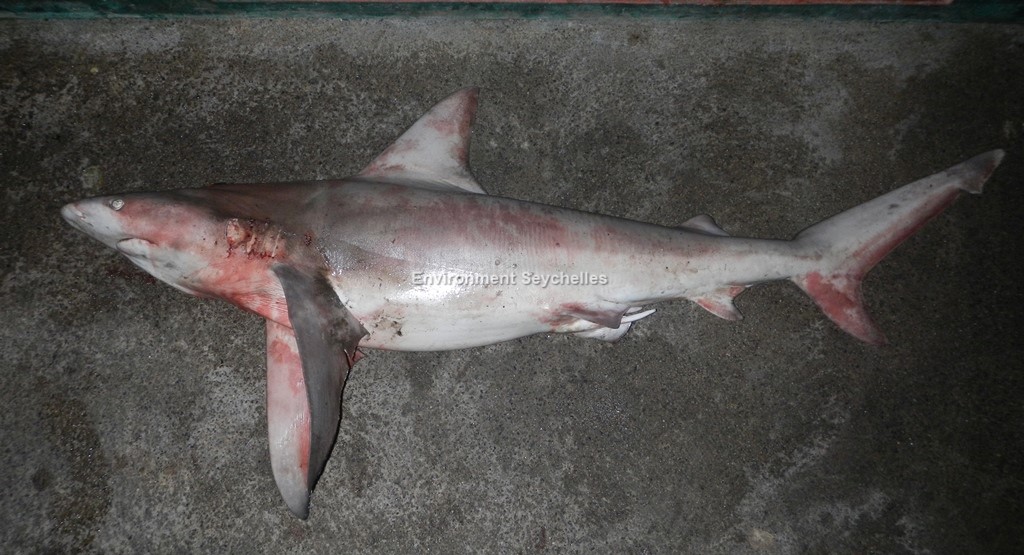Description:
Heavy-bodied, cylindrical shark, greyish above becoming white below. No conspicuous markings but dusky fin tips (except the pelvics), faint white flank marking. A large,
long broad snout, long nasal flaps, high triangular saw edged upper teeth. Prominent high and broad interdorsal ridge, large straight pectoral and dorsal fins.
Fins: D1 large (high and broad) angular fin with rounded apex and straight posterior edge to free rear tip. Long almost straight pectoral fins with blackish inner corners.
Size:
Born 70-90cm TL. Maturity: males 190 to 216 cm TL, females 225 cm TL. Maximum length about 300 cm TL.
Habitat and Ecology:
Offshore, on deep continental and insular shelf edge and uppermost slopes (depth typically 80 m to at least 250 to 430 m but on occasion shallower, young shallower up to 25m
and sometimes to the surface). There is some evidence of diurnal vertical migrations.
Eat bony fish, other sharks, stingrays, and cuttlefish.
Viviparous, gives birth every second year with 3-15 pups per litter. Off Madagascar, young are born in September and October.
Fishery Status:
This species is not protected. It is however illegal to fish for sharks with nets (Fisheries Act, Reg 16.c). This species is caught occasionally in the artisanal fishery
around the “bordage” of the Mahé Plateau. It is known to be caught in the semi-industrial longline fishery with specimens from this fishery sometimes finding their way onto
the local market.
Notes:
Shares the Creole name “Zelron” with the Sandbar shark (C. plumbeus). First documented as a distinct species in the catch and new record for Seychelles, in 2013 by J. Nevill.
References:
Bray, D.J. (2018). Carcharhinus altimus in Fishes of Australia, http://136.154.202.208/home/species/2879 (06/02/20).
Ebert, D.A. et al. (2013). Sharks of the World – A fully illustrated guide. Wild Nature press ISBN 978-0-9573946-0-5
Froese, R. and D. Pauly. Eds. (2018). Fishbase. https://www.fishbase.se/summary/Carcharhinus-altimus (05/02/20)
Pillans, R. et al. (2009). Carcharhinus altimus. The IUCN Red List 2009: e.T161564A5452406. https://dx.doi.org/10.2305/IUCN.UK.2009.RLTS.T161564A5452406.en. (05/02/20).
Rigby, C.L. et al. (2020). Carcharhinus altimus. The IUCN Red List 2020: e.T161564A890724. https://dx.doi.org/10.2305/IUCN.UK.2020-3.RLTS.T161564A890724.en. (04/04/22).
Citation:
Nevill, J.E.G. (2020). Carcharhinus altimus, Bignose shark. Seychelles Seatizens. www.seatizens.sc. https://seatizens.sc/species/6713-2/ (Updated 04/04/22).




Say, you got a nice blog post.Really looking forward to read more. Fantastic.
I cannot thank you enough for the blog.Much thanks again. Keep writing.
Great, thanks for sharing this post.Really thank you! Really Cool.
I really like and appreciate your blog post.Much thanks again. Fantastic.
A round of applause for your blog article.Really looking forward to read more. Cool.
Muchos Gracias for your post. Awesome.
I am so grateful for your article post.Thanks Again. Want more.
I value the blog. Awesome.
Im grateful for the blog.Really thank you! Awesome.
I value the blog article. Much obliged.
Enjoyed every bit of your blog.Much thanks again. Much obliged.
Appreciate you sharing, great article post.Really looking forward to read more. Will read on…
Really enjoyed this blog.Really thank you! Fantastic.
Wow, great article post.Thanks Again. Will read on…
Very neat blog article. Really Great.
I loved your article post.Really thank you! Great.
wow, awesome blog post.Really thank you! Really Great.
Say, you got a nice blog article.Really looking forward to read more. Will read on…
I really liked your blog article.Thanks Again. Keep writing.
Very neat blog article. Fantastic.
I value the post.Really looking forward to read more. Will read on…
I am so grateful for your post.Really thank you! Great.
I really enjoy the blog article.Really looking forward to read more. Want more.